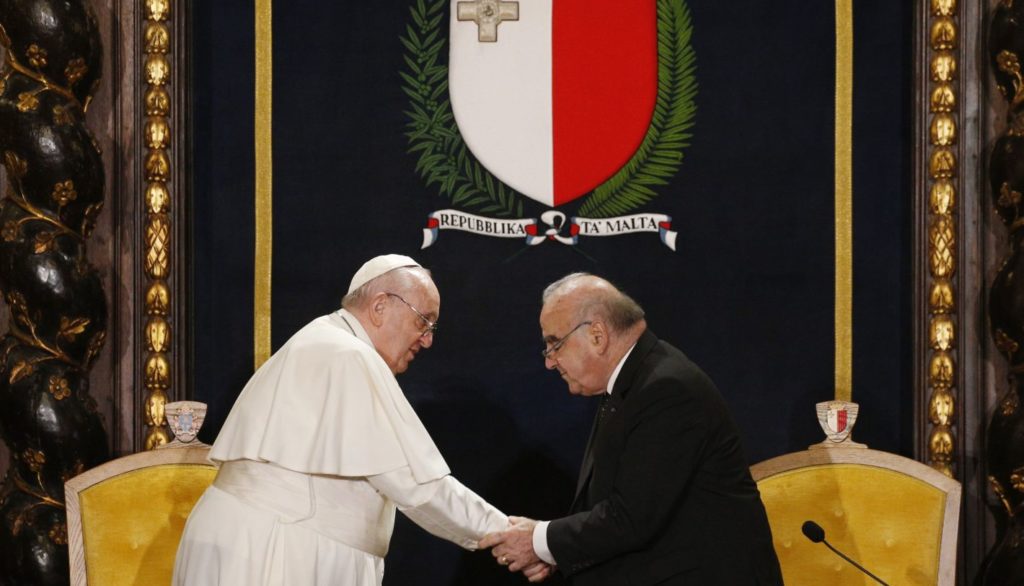French translation by Roberto Gambi. Original text in Spanish here.
This weekend, on April 2 and 3, Pope François is on the island of Malte for his 36th international visit. A pilgrim on the traces of Saint Paul, the Pope will visit a community that has always been welcoming and which, today, still gives refuge to those who are reluctant to leave their homeland.
It is the opportunity "to go to the source of the Annunciation of the Evangelical" and to know and meet personally a historical and living community, which continues to engage "in the welcome of so many brothers and sisters and friends who seek refuge". It is with these words that Pope François asked the faithful gathered for the general audience on Wednesday to accompany him on his trip to the island of Malte, which took place this weekend, April 2 and 3.
The 36th apostolic voyage of Pope François, already reported on account of the pandemic, follows the traces of the apostle Saint Paul, who was shipwrecked on the small Mediterranean island when he surrendered to Rome to be judged. Even there, he found a people who treated him "with a rare humanity", as he recounts in chapter 28 of the Acts of the Apostles, which inspired the visit.
Les rencontres
He was to deliver five speeches over two days, beginning with a speech to the authorities and the diplomatic corps at the presidential palace in La Valette on the morning of his arrival. In the afternoon, there will be a prayer meeting at the Marian shrine of Ta' Pinu, the most famous place of pilgrimage in Malta, located on the other small island of Gozo; the trip will take place by catamaran, a journey of more than one hour.
Late Sunday morning, the Souverain Pontife will have a brief meeting with the local Jesuits, before returning to the Cave of St. Paul in Rabat, where, according to tradition, the Apostle stayed in the 60's after the shipwreck. He then stayed there for three months, preaching, baptizing and guiding the sick, thus bringing Christianity to the island.
After the private prayer, Father François will light the votive lamp and sing a prayer to St. Paul. In the basilica of the same name, he will meet 14 religious leaders, some of the sick and other people assisted by the Caritas organization. He will pray before the Holy Sacrament for the "mercy of mercy" and benediction.
Sunday's event is held on the Place des Granai in Floriana, the town located outside the walls of the capital, La Valette. The church dedicated to Saint-Publius, who was Malte's first evangelist and who welcomed the shipwrecked Paul, is located in front of the place.
The Souverain Pontife will have his last meeting with some 200 migrants at the "Laboratoire de la paix 'Jean XXIII'", a shelter center founded in 1971 by the Frenchman Dionysius Mintoff, which today welcomes people coming mainly from Somalia, Ethiopia and Sudan via Libya.
The travel logo
LWelcome, as we have said, will be the predominant theme of this visit. The logo of the voyage itself shows the hands pointing towards the cross, coming from a boat at the mercy of the wanders. The hands are censored to represent a sign of the welcome of the Christian towards his next and of the help given to people in difficulty, abandoned to their fate. The boat, as for him, is a reference to the dramatic history of the shipwreck of Saint Paul and the welcome of the Maltese, as we read in the Acts of the Apostles.
Pope François is the third pontiff to visit Malte, after two visits by St. Jean-Paul II (1990 and 2001) and by Benedict XVI in 2010. The island has six priests, more than 700 priests and 48 seminarians; there are 800 professed religious and some 1,250 cathechists. The Church also manages 48 kindergartens and 24 training institutes.









